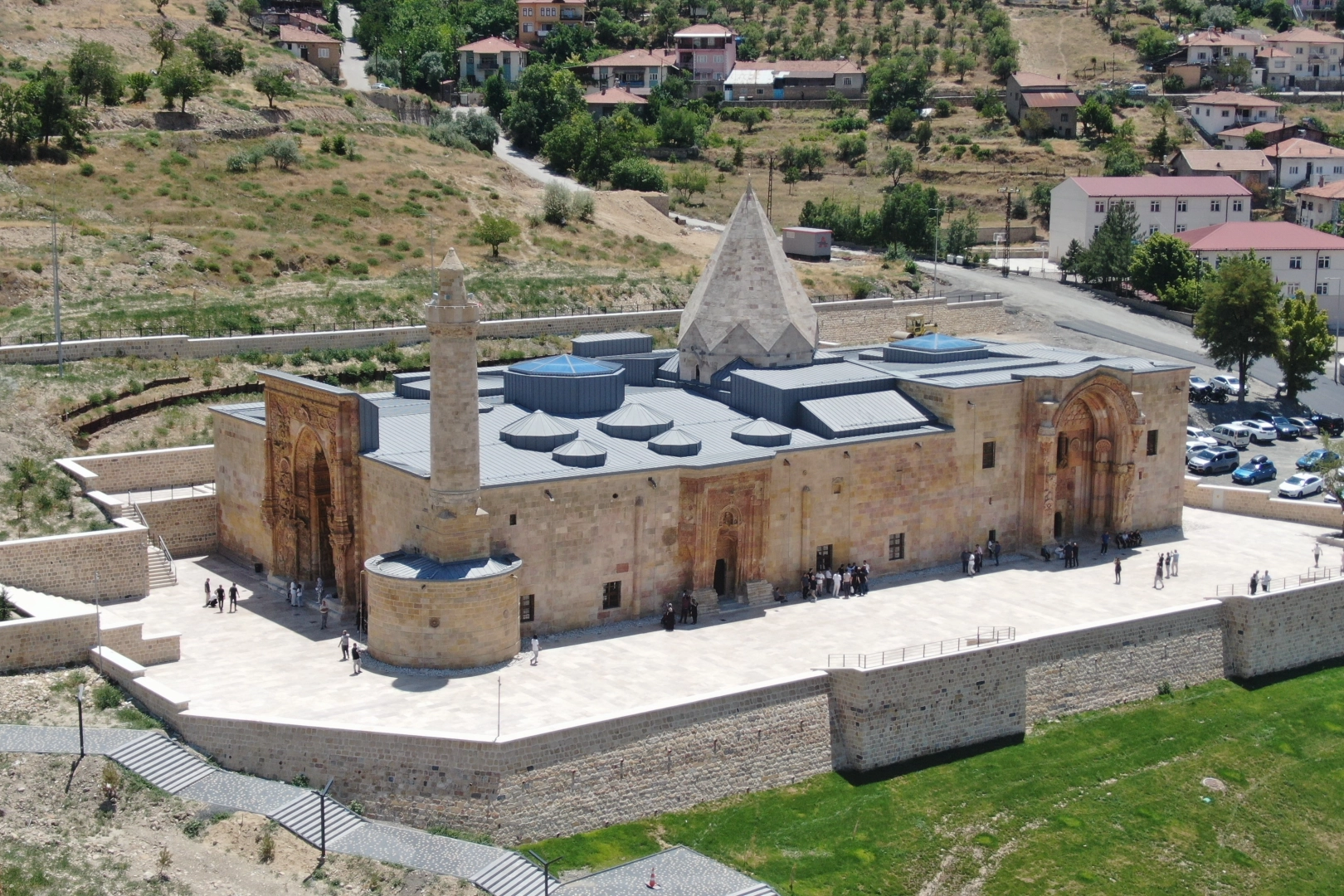The Turkish Statistical Institute (TÜİK) revealed that Sivas has 458 protected sites, reflecting its 4,000-year history. Hakan Bakar, President of the Sivas Tourism Association, raised concerns about poor maintenance, inadequate signage, and insufficient lighting around historical sites.

Türkiye's Statistical Institute (TÜİK) announced the "Cultural Heritage Statistics" for 2023. Accordingly, Sivas, which has a known 4,000-year history and has hosted many civilizations, has 458 protected areas. Of these protected areas, 453 are archaeological sites, 3 are historical sites, 1 is an urban site, and 1 is a mixed site. Hakan Bakar, President of the Sivas Tourism Association, stated in his remarks that the maintenance of such places is not being adequately performed, saying, “Environmental regulation and restoration works are being carried out, but unfortunately, we cannot take good care of these restorations seasonally in later periods.”
“We host many historical artifacts in Sivas” Hakan Bakar, President of the Sivas Tourism Association, expressed that many historical artifacts are located in Sivas, stating, “As you know, the Turkish Statistical Institute recently shared various data regarding protected areas across Türkiye. If I’m not mistaken, there are 458 protected areas in Sivas, according to the data for 2023. Of course, in 2019, this data was around 388 if I remember correctly. This means that approximately 60-70 new protected areas have been added. Sivas, as you know, is a city with a history dating back to before Christ. We host many historical artifacts in Sivas. We need to think that the underground riches are essentially important here. In fact, everything is underground. With more intensive research, new protected areas are emerging.”
History changes from curb to curb Bakar noted that the historical structure changes when moving from one curb to another, saying, “When people come to Sivas, especially in the Republic Square, which we describe as the historical town square, they can see many artifacts at once. This is actually a very ideal opportunity for travelers who want everything to be at their fingertips when they visit a city. Why? Because they can easily see everywhere without needing much transportation. In this area, there are Ottoman artifacts, Seljuk artifacts, and artifacts from the Republican Era. When we look, on one side we have the Congress Building, and on the other side, we have the Kale Mosque. Actually, between this İstasyon Street, which we call İnönü Boulevard, and the thirty to forty meters in between, we can experience a transition of about seven hundred to eight hundred years in historical structure. It’s almost like being transported from the Republican period to the Seljuk or Ottoman period. This is actually a very important opportunity. We can also notice that the historical structure changes when moving from one curb to another. This is of course thanks to the masterpieces that our ancestors left us.”
“There is still a lack of signs” Bakar mentioned that there is a lack of promotional signs, stating, “So, can we take good care of these artifacts? This is one of the really important issues. Environmental regulation and restoration works are being carried out, but unfortunately, we cannot take good care of these restorations. Here, corn vendors are trying to sell corn. Some are letting children drive cars here. At first glance, this seems very nice, but in reality, it results in a very messy and meaningless situation. My request from the authorities is this: at least for the small booths or people driving vehicles in this area, there is a gap behind these artifacts; taking that area would contribute to the city if they could all be unified in that area. There is still a lack of signs. It mentions what these artifacts mean and which years they have come from, but for example, when you enter the Buruciye Madrasah, there are signs next to it. It is also very important that the signs are placed where people can see them clearly.”
Historical artifacts remain in the dark Bakar pointed out that some historical artifacts remain in the dark, stating, “The square can at least be improved. Underneath it, there should be a ‘Welcome to Sivas’ area created for taking photos as a Sivas souvenir. In previous years, you know that works have been done regarding the lighting of our historical artifacts. Various architectural lighting projects were shared with the press. Of course, some lighting has been done for the historical Gendarmerie building, the governor's building, and the Congress building. But we see that the Kale Mosque, the Twin Minaret, and the Buruciye Madrasah still have not had this lighting done. These are the places where lighting should occur. Why? Because it is both in a depression and at night, people are left in darkness here. With proper lighting, this area will be more visible.”